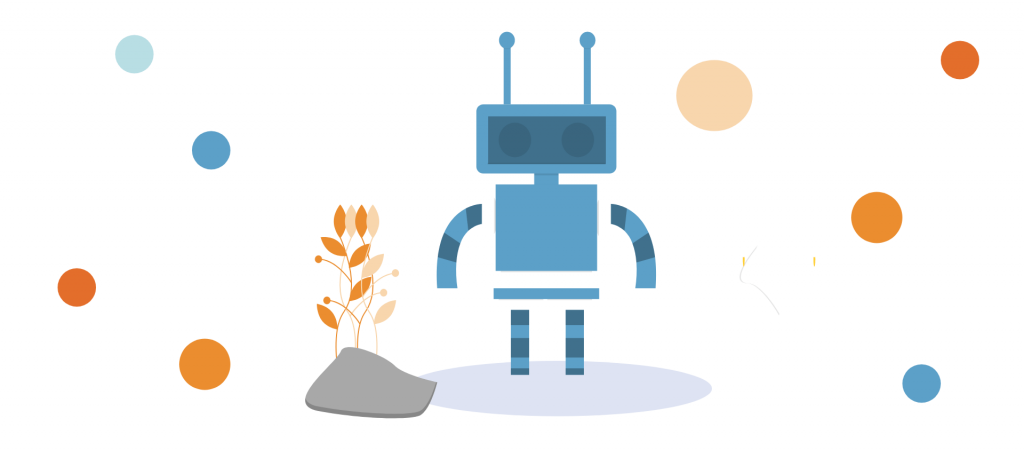How to Build a Great Donor Experience: 6 Takeaways From Donor Experience Week


The first free webinar series dedicated to improving your donor’s experience was held on September 23-27, 2019. By gathering a wide range of fundraising experts and nonprofit professionals, attendees left with a stack full of new ideas and strategies for future donor engagement initiatives.
Here are the 6 most important takeaways from this amazing week of learning.
1. Plan your strategy
During her webinar session, Julia Campbell compared donor communication to exercising: “The more strategically and thoughtfully you do it the better”
When considering donor engagement strategies, getting started with clear goals in mind is crucial for your success. Without a clear picture of what you want the future to look like, you’ll always be more reactive than proactive. Strategy planning provides your organization with a sense of direction toward achieving your goals. This is true for every step you take to bring donors down the donor funnel and turn them into long-term supporters.
Before taking any actions, you should always ask yourself:
- What I am trying to achieve?
- Do I have a good understanding of my audience? Who I am talking to? What are their interests? What communication channels do they prefer?
- What existing tools and resources do I have at my disposal?
- How will I evaluate my progress?


This thinking process is a good starting point for your donor engagement strategy – whether online or offline. Donors have different interests and organizations have different needs and resources, once you figure out what matters to you, you can better shape the way you attract and interact with donors.
2. The easier you make it (to donate), the better the experience
While this applies to many things in life, the easier you make the act of donating, the better the experience will be, and all the more likely that the donor will return. One of the primary goals of online giving is to make it convenient for donors to give. When visitors navigate your website, they should easily find their way to your donation page and it should be intuitive to use.
At Donor Experience Week, nonprofit experts stressed the importance of creating an online donation process that isn’t unnecessarily long or difficult. When running email campaigns, you should send donors straight to your donation page. When creating your donation page, you should reduce the number of steps visitors have to go through to process a donation.
Regardless of the channel you’re using to ask for donations, you should always be clear and direct about why a donation is needed and the impact it will have. For instance, Brady Josephson advised us to add more text on donation pages. Visitors are more likely to give if they feel engaged with your mission, so take the space you need to remind people WHY they should make a donation to your nonprofit organization today.
3. If donors stop giving, you have a communication issue
The donor experience is not all about building your donor list; What happens after the first gift? How do you nurture donors’ interests in your mission? Lori L. Jacobwith made an important point about why donors stop giving: you don’t communicate with them! Fixing this retention problem is totally under your control.
Regular communication is key to keeping donors interested in your work. It doesn’t mean you should drown donors in emails and social media posts – communication should always consider quality over quantity. However, if they don’t hear from you, or don’t remember hearing from you, you have a communication problem.
What matters here is creating value for your donors, and giving them a reason to continue supporting you. Show your donors they are worth more than just the money they give. Start by saying thank you, then nurture the relationship with relevant content like updates about your work, important announcements, and milestones your organization has reached. Take the time to show them the impact their involvement is making in the mission they support. Valuable content is what converts donors into long-term supporters.
4. Digital communication will never replace real-time conversation
Social media, email campaigns, blog posts, chatbots… These are great ways to stay in touch with your supporters and create strong online communities. But down the line, what matters are the humans behind the screen; people give to people and not to marketing machines.


Communication is a two-way street. To create meaningful donor relationships, you should make donors feel like they are having a conversation with you – that could mean sending a survey to get feedback or simply calling them.
“Calling your donors is always good!” said Erica Waasdorp. Call them to say thank you, to follow up on a donation, or simply to share an important update. You can also consider sending a text message. The point is you shouldn’t be afraid of over-communicating as long as you are providing value. Donors engaged with your cause because they care and they want to hear from you. If they don’t want to hear from you, they will tell you – but you will only know if you talk to them.
5. Data is your best friend
The most important takeaway from the event is that you can’t communicate effectively with donors without data. Whatever tools you’re using – Excel Spreadsheets or a CRM like Keela – keeping track of donor information and behavior will help you cultivate the right people on the right channels.
Nejeed Kassam, CEO at Keela, reminded us of the importance of setting up a data-driven culture to see what your organization is doing well and what can be improved. In a nutshell, data can help you understand:
- What happened
- Why it happened
- What could happen
Technology can be extremely helpful to get through these levels of data literacy. Not only because it makes it easier to store and organize data, but also because it helps identify trends and opportunities.
Picture this: It’s the beginning of the year and you’re trying to figure out the details of your next fundraising campaign. When should it start? What types of donors should you target? What communication channels should you prioritize? Well, here’s the power of data – it can build your confidence and guide your next steps by analyzing past campaigns to show you what worked, and what didn’t. This same data will essentially use your past results to predict your future success.
6. Automation doesn’t replace humans, it augments humans
“What’s real? What’s Sci-Fi?” asked Beth Kanter during her webinar. When it comes to technology, some of us picture robots taking over our job or Alexa listening to our conversations. But, nonprofit technology shouldn’t be seen as daunting. Beth claimed that by taking the repetitive work off our shoulders, technology will make our life easier.


At Donor Experience Week, speakers highlighted the potential that new technologies offer to automate administrative tasks and free up time we can then use on more meaningful activities.
Both Beth Kanter and Nejeed Kassam explained why nonprofit technology is not meant to replace the people who work so hard to support your mission. Years of experience, personal relationships, and intuition are, and always will be, fundamentally important to effective work in the sector. Let me ask you this, why ask a passionate volunteer to spend her time doing data entry when she could be connecting with donors or creating inspiring messaging? Technology takes over the tasks humans are comparatively bad at, freeing their time for the things only a human touch can accomplish. Artificial Intelligence and Data Analytics can help us identify trends and opportunities, but down the line, we are still the ones making the final decisions and connecting with each other.
Nonprofit organizations are already making use of Intelligent tools to conduct donor prospecting, customize donor engagement and free up staff time. Here’s a quick overview of the tools nonprofits currently use: Chatbots to communicate with donors in real-time
- Social media listening to better understand the interests of donors
- Donor Scoring to identify the donors that are most likely to give
- Predictive analysis to suggest donation amounts and the best time to ask
- Text analytics to adjust the content and tone of emails to a specific audience
The bottom line is the age of automation is here and it will have a significant impact on the way we work and the way we communicate with donors. Digital transformation holds many opportunities for organizations willing to adapt and learn.
So you have it – the elements to build a great donor experience. If we’ve learned anything from these amazing speakers, it’s that a donor-centered strategy is key to the success of your mission. Giving is one of the most personal acts anyone can make. Creating valuable and personalized experiences will turn donors into engaged supporters.
What ideas inspired you most from Donor Experience Week? What will you try and implement first? Post your comments below.
